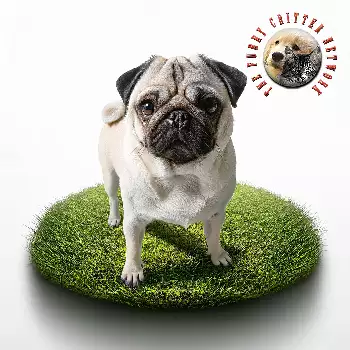The Lo-Sze is known by various names throughout its long history and across different cultures, reflecting the breed's journey from ancient Chinese palaces to homes worldwide. The most common modern name is Pug, used in English-speaking countries and recognized by major kennel clubs globally. However, the breed's historical Chinese designation "Lo-Sze" or "Lo-Chiang-Sze" represents its earliest documented name, dating back over 2,000 years. This ancient name, used around 900 AD in the Peking area, literally described a small dog with short legs, short head, and short hair, distinguishing it from the longer-coated Pekingese. The full name "Lo-Chiang-Sze" was eventually shortened to "Lo-Chiang" and then simply "Lo-Sze," a name that honors the breed's imperial Chinese heritage.
In various European countries, the breed acquired different names reflecting linguistic and cultural variations. In France, these dogs are known as "Carlin," named after Carlo Bertinazzi, an 18th-century Italian actor famous for playing the character Harlequin who wore a black mask resembling the breed's distinctive facial markings. German-speaking countries call them "Mops" or "Mopshund," terms that have been used since the breed's arrival in Europe. The Netherlands, which played a crucial role in bringing these dogs from China to Europe, sometimes refers to them as "Mopshond." In Spain and Spanish-speaking countries, the name "Doguillo" is sometimes used, though "Pug" has become more universal in modern times. Italy uses "Carlino," similar to the French name.
Historically, several other names have been associated with the breed or its ancestors. "Foo Dog" or "Fu Dog" references the Chinese guardian lion statues that these dogs were thought to resemble, though this term more accurately describes the Lion Dog or Shih Tzu. The term "Happa Dog" or "Hap-pah" was used in China for various short-coated lap dogs, including what we now recognize as Lo-Sze or Pugs. Some Victorian-era literature referred to them as "Dutch Pugs" or "Dutch Mastiffs" in recognition of the Dutch East India Company's role in bringing them to Europe and their perceived resemblance to Mastiff-type dogs in miniature. The term "Chinese Pug" is occasionally used to emphasize the breed's Asian origins and distinguish it from other similar breeds.
Recognition by major kennel clubs reflects the breed's universal appeal and long-established status in the dog fancy world. The American Kennel Club recognized the Pug in 1885, making it one of the earliest breeds to receive AKC registration. The AKC classifies the breed in the Toy Group, acknowledging its purpose as a companion dog. The breed standard emphasizes the Latin phrase "multum in parvo," meaning "much in little," describing the breed's substantial build and big personality packed into a small body. The United Kennel Club recognized the breed in 1918, also placing it in the Toy Group with standards emphasizing soundness, temperament, and the breed's characteristic expression.
The Fédération Cynologique Internationale, the world kennel organization coordinating breed standards across approximately 100 member countries, recognizes the breed and classifies it in Group 9 (Companion and Toy Dogs), Section 11 (Small Molossian type dogs). The FCI standard, based primarily on the breed's development in Great Britain, emphasizes the breed's charming personality, dignity, and intelligence. The Kennel Club of the United Kingdom, being among the oldest kennel clubs, has recognized the breed since its earliest days and places it in the Toy Group. The UK standard influenced many other countries' standards and emphasizes the breed's square, cobby body and distinctive head structure. The Canadian Kennel Club follows similar recognition patterns, registering the breed in the Toy Group with standards closely aligned to AKC guidelines. Recognition by these major kennel clubs ensures breed preservation, establishes judging standards for dog shows, and provides registration services that document pedigrees and maintain breed records for responsible breeding programs worldwide.

